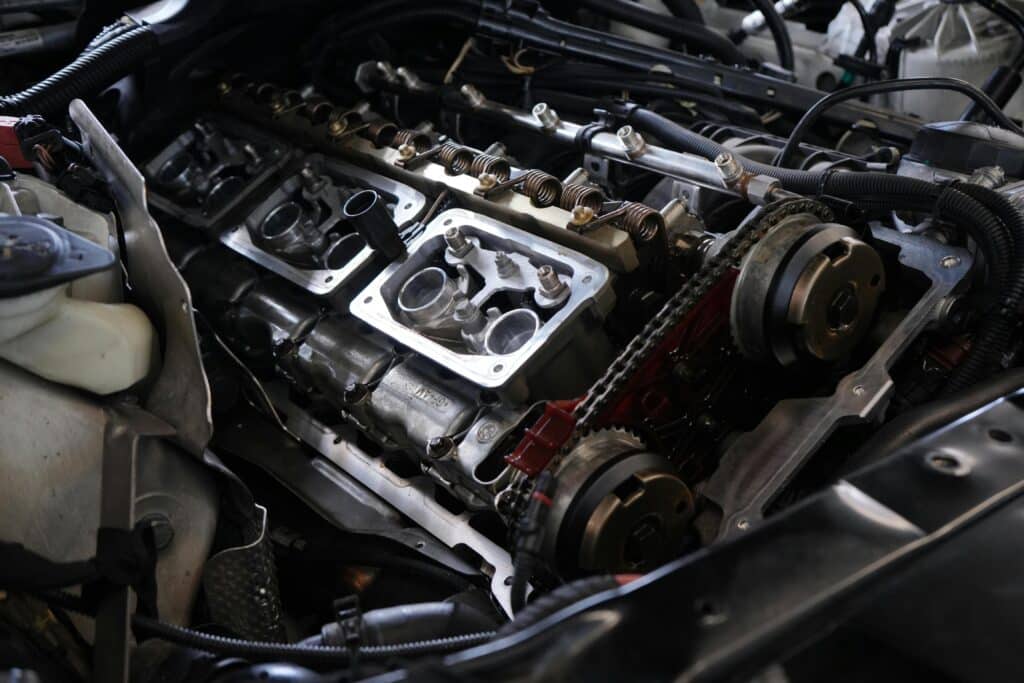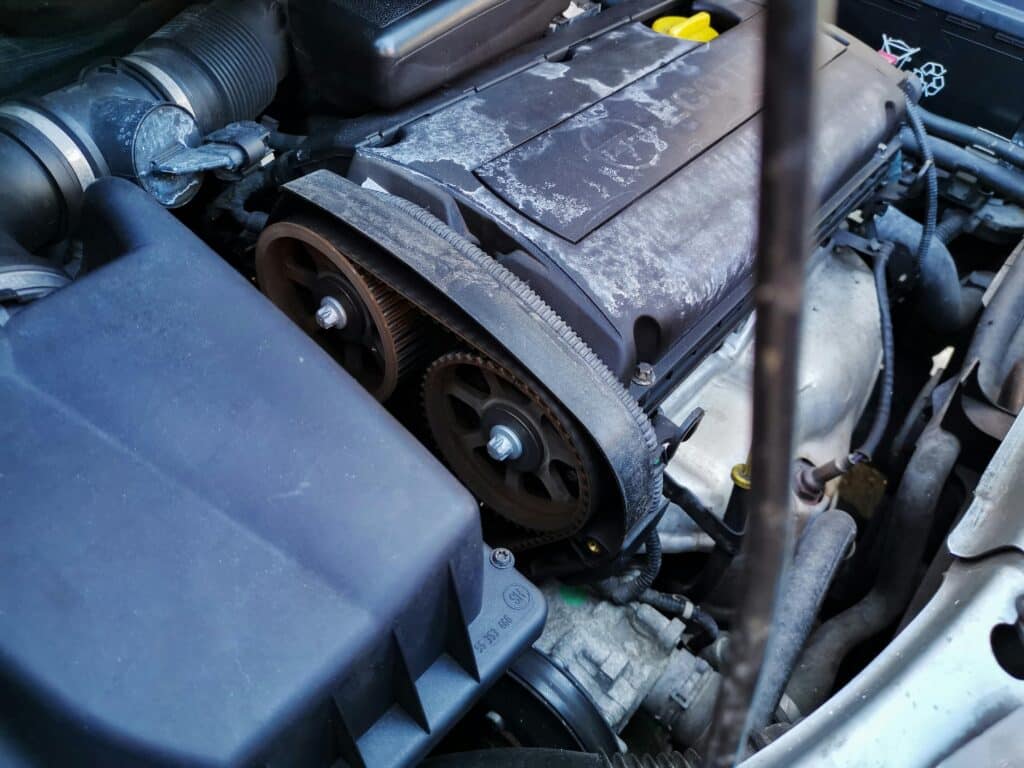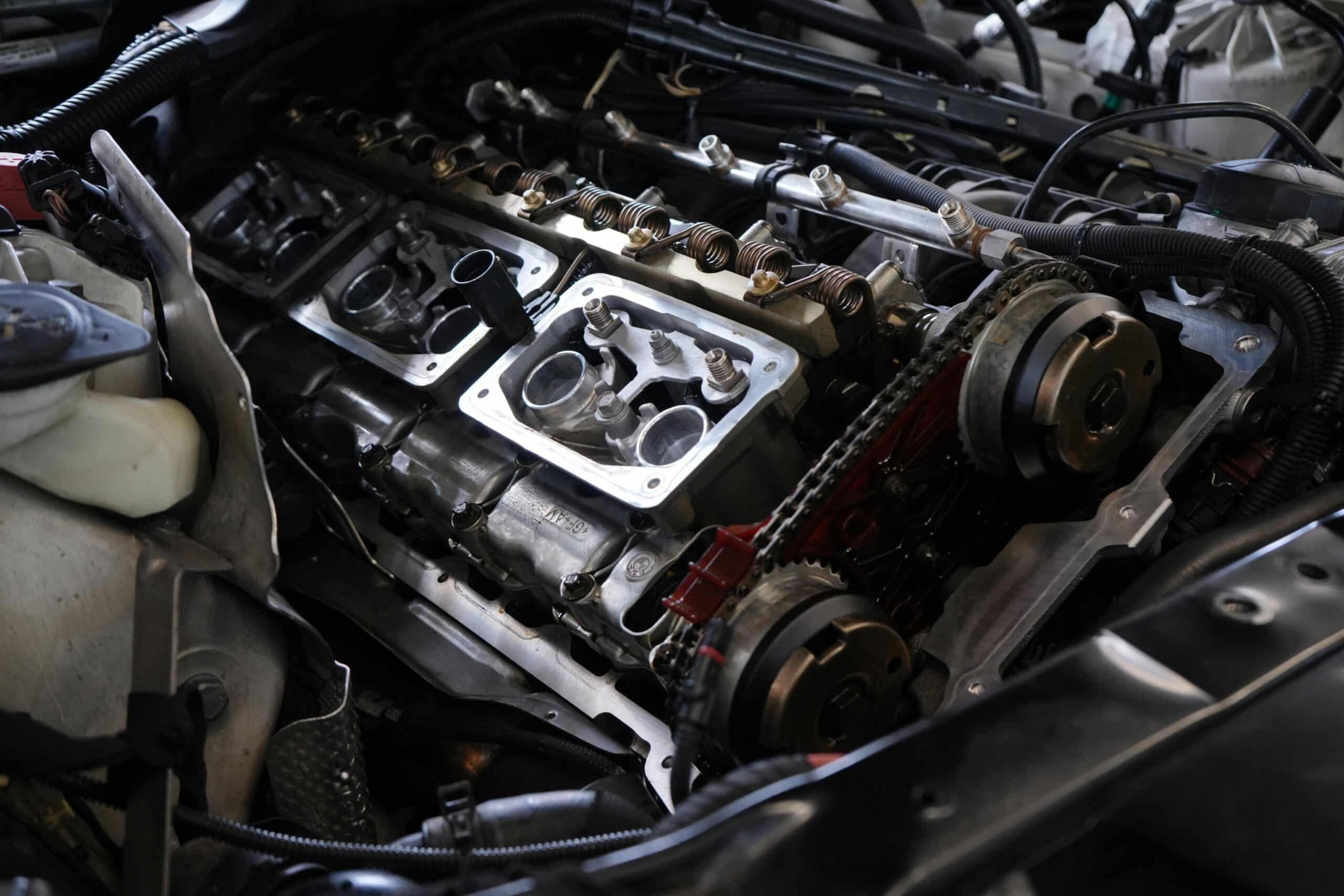When it comes to your car’s engine, timing is everything. The timing chain and timing belt are two essential components that keep your engine running smoothly by ensuring the proper synchronization of the engine’s moving parts. While they serve the same purpose, timing chains and timing belts are different in both design and maintenance. Understanding the difference between the two can help you take better care of your vehicle and avoid potential engine damage.
At Anyplace Auto Repair, we offer mobile repair services across Phoenix, Scottsdale, Mesa, Tempe, and the surrounding areas, including timing chain and timing belt inspections and replacements. Here’s what you need to know about both parts and how to maintain them.


What is a Timing Chain?
A timing chain is a metal chain that links the crankshaft to the camshaft(s) in your engine, ensuring that the intake and exhaust valves open and close at the proper times. Timing chains are typically found in newer vehicles or luxury carsbecause they are designed to last longer than timing belts.
Benefits of a Timing Chain:
- Long-lasting: Timing chains are designed to last the life of the engine and don’t need to be replaced regularly like timing belts.
- Durable: Made of metal, timing chains are more resistant to wear and tear over time.
- Low Maintenance: Timing chains don’t require frequent replacement, but they should still be inspected for wear, especially after 100,000 miles.
When Should You Replace a Timing Chain?
Timing chains are generally low-maintenance, but they can stretch or wear over time. If you hear a rattling or knocking sound from your engine, it could be a sign that the timing chain is loose or damaged. Anyplace Auto Repair can come to you and inspect the timing chain and make necessary repairs.
What is a Timing Belt?
The timing belt is made of rubber and serves the same purpose as the timing chain—it synchronizes the crankshaft and camshaft(s). Timing belts are typically found in older vehicles or in vehicles designed with a more cost-effective design in mind.
Benefits of a Timing Belt:
- Cost-effective: Timing belts are less expensive to manufacture, making them more common in older or economy cars.
- Lightweight and quiet: Timing belts are made of rubber, making them quieter and lighter than metal timing chains.
When Should You Replace a Timing Belt?
Unlike timing chains, timing belts need to be replaced regularly—typically every 60,000 to 100,000 miles—to prevent them from snapping, which can cause severe damage to your engine.
If you don’t replace the timing belt as recommended, you risk a timing belt failure, which could result in engine damageand costly repairs. A broken timing belt can cause the engine’s pistons to collide with the valves, leading to serious damage.
Signs Your Timing Belt Needs Attention:
- Squeaking or ticking noises from the engine
- Rough engine performance or difficulty starting the engine
- Check engine light turning on
- Visible wear on the belt, like cracks or fraying
Timing Chains vs. Timing Belts: Key Differences
| Feature | Timing Chain | Timing Belt |
|---|---|---|
| Material | Metal | Rubber |
| Lifespan | Lasts the lifetime of the engine (approximately 150,000-200,000 miles) | Needs replacing every 60,000-100,000 miles |
| Maintenance | Low maintenance, occasional inspection required | Regular maintenance and timely replacement required |
| Cost | More expensive to replace if damaged | Less expensive to replace |
| Noise | Can be noisy if loose or damaged | Quieter than timing chains |
| Durability | More durable and long-lasting | Prone to wear and tear over time |
| Location in Engine | Found in most modern and luxury vehicles | Found in many older or economy vehicles |
Why Should You Care About Timing Chains and Timing Belts?
The timing chain or belt ensures that your engine’s camshaft and crankshaft rotate in perfect harmony. If this synchronization fails, your engine can suffer serious damage, leading to costly repairs. Whether you have a timing chainor a timing belt, it’s crucial to keep these parts in good condition to avoid engine failure.
Regular inspections and replacements (for timing belts) are essential to maintaining your car’s engine and overall performance.
Let Anyplace Auto Repair Help with Your Timing Chain or Timing Belt Needs
At Anyplace Auto Repair, we specialize in mobile diagnostics and repairs for both timing chains and timing belts. We come to you in Phoenix, Scottsdale, Mesa, Tempe, and the surrounding areas, offering timing chain inspections, timing belt replacements, and more. Don’t wait until you hear a noise or experience engine problems—let us help you keep your car running smoothly.
📞 Call us today 480-613-2078 or book online at www.anyplaceautorepair.com.
#TimingChain #TimingBelt #AutoRepair #MobileMechanic #CarMaintenance #PhoenixAutoCare #EngineRepairs #CarCare
- What Your Dashboard Warning Lights Mean in Phoenix, AZ (And When to Worry)
- What Does an OBD Scanner Do in Phoenix, AZ? A Comprehensive Guide
- Regular Service Intervals for Your Vehicle in Phoenix, AZ: Keep It Running Strong
- Emissions Testing in Phoenix, AZ: What Your Vehicle Is Tested For & How to Pass
- Your Car Hit 100,000 Miles in Phoenix, AZ? Essential Maintenance Checklist


Leave a Reply